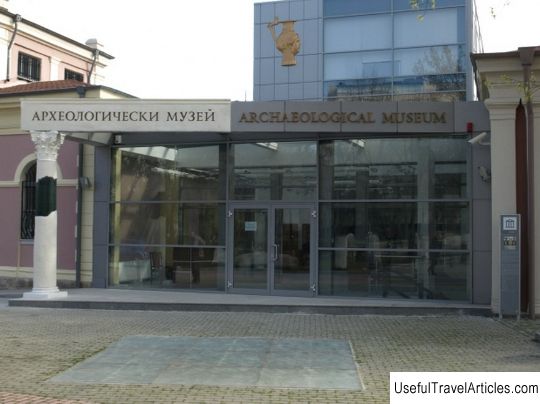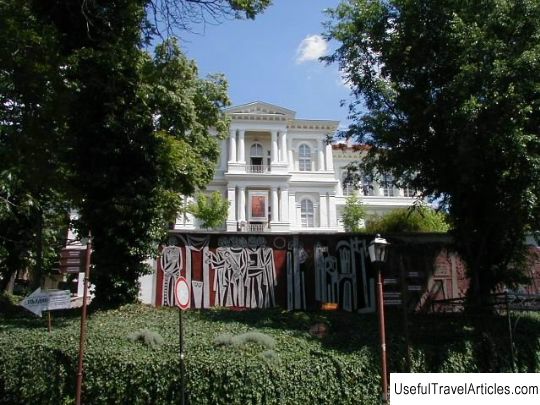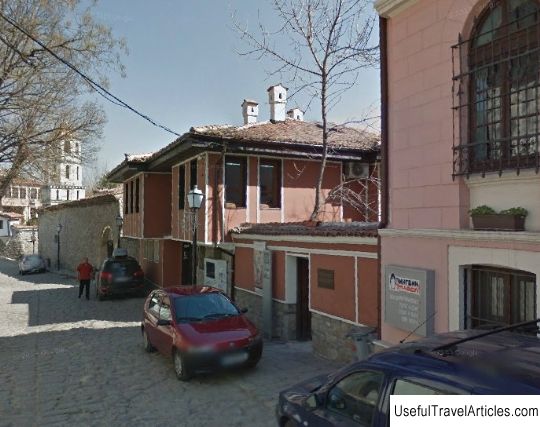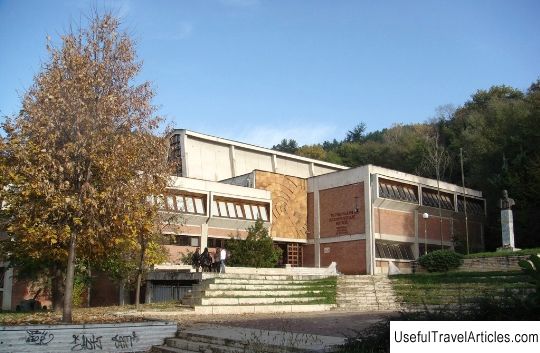Archaeological Museum description and photos - Bulgaria: Plovdiv
Rating: 8,3/10 (4895 votes) 
Archaeological Museum description and photos - Bulgaria: Plovdiv. Detailed information about the attraction. Description, photographs and a map showing the nearest significant objects. The name in English is Archaeological Museum. Photo and descriptionThe Archaeological Museum, located in the center of Plovdiv, was established in 1882. Initially, the museum's collection included a numismatic collection of about 1,500 coins, as well as historical and ethnographic documents, household items and religious culture, archaeological finds from the VIII-XVII centuries, more than 300 icons and paintings by famous Bulgarian painters Stanislav Dospevsky, Ivan Lazarov, Tsanko Lavrenov , Nikolay Rainov, Zlata Voyadzhev and others. Gradually, the number of exhibits presented in the complex grew. Currently, the museum's fund contains about one hundred thousand artifacts related to different stages of the historical development of one of the world's oldest cities, Plovdiv. The exhibits of the Archaeological Museum are divided into several thematic blocks, corresponding to different historical periods - prehistoric, Thracian, Ancient Greek, Roman, Medieval, Ottoman and Bulgarian. A separate numismatic collection is presented (60,000 coins from the 6th century BC to the present). The prehistoric collection contains 4800 items of the Neolithic, Copper and Bronze Ages: tools made of stone, bone, antler, jewelry, figures of copper and bronze, pottery. The most valuable exhibit of the Thracian collection is the Panagurishte treasures found in 1949, including nine vessels of gold (total weight - 6 kg), eight gold bowls, made in the form of representatives of the animal world, and a dish. Scientists have established that these objects belonged to a Thracian ruler who lived in the late 4th - early 3rd centuries BC The ancient Greek collection consists of objects discovered during archaeological excavations near the villages of Duvanli and Chernozem: ceramics, silver and gilded cups, bowls, dishes, jewelry. The finds date back to the 5th-4th centuries BC. BC The Roman collection contains 5 thousand exhibits. These are bronze figurines, dishes, tombstones, sarcophagi, mosaic fragments. There are also 500 clay lamps, 50 marble sculptures, etc. The medieval period is reflected in 1270 objects, including: church utensils, tools, jewelry, stone sculptures, earthenware, etc. The times when Plovdiv was part of the Ottoman Empire are presented in the Islamic exposition of the museum.      We also recommend reading Volcano San Venanzo Park and Museum (Parco e Museo vulcanologico di San Venanzo.) description and photos - Italy: Umbria Topic: Archaeological Museum description and photos - Bulgaria: Plovdiv. |




